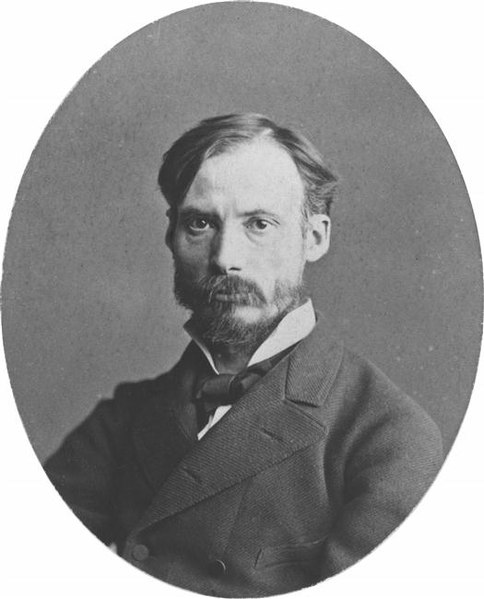
Born: 25 February 1841, Cagnes-sur-Mar
Died: 3 December (aged 78)
Period: Impressionism
The Life of Pierre-Auguste Renoir
Pierre-Auguste Renoir was a French artist renowned as one of the leading figures of the Impressionist movement. His work is celebrated for its vibrant light and saturated color, focusing on beauty, especially in terms of feminine sensuality and the joyful aspects of life. Unlike many of his contemporaries who focused on the urban landscape and modern life, Renoir’s subjects often included lively social settings, intimate family scenes, landscapes, and portraits, all imbued with a warm, radiant light.
Early Life and Training Renoir was born in Limoges, France, into a working-class family. At the age of 13, he became an apprentice to a porcelain painter, which marked the beginning of his lifelong journey in art. His talent for drawing led him to pursue classical studies at the Ecole des Beaux-Arts in Paris and to practice painting in the traditional style at the Gleyre studio, where he met future Impressionists like Claude Monet, Alfred Sisley, and Frédéric Bazille.
Impressionist Movement In the early 1870s, Renoir, along with his friends, began experimenting with painting en plein air (outdoor painting), focusing on capturing the changing effects of light and atmosphere. This period was crucial in the development of the Impressionist style. Renoir participated in the first Impressionist exhibition in 1874, showcasing his distinctive use of light and interest in capturing moments of happiness and leisure.
Mature Work Throughout the 1870s and 1880s, Renoir’s style evolved, and he achieved significant success. His paintings from this period, such as “Le Moulin de la Galette” (1876), showcase lively scenes of Parisian life with sparkling color and light. Despite his association with Impressionism, Renoir never fully abandoned the traditional techniques of figure drawing and structure, particularly in his portraits.
Later Years and Legacy In the later part of his life, Renoir’s work became more classical in its approach, influenced by his admiration for Renaissance art. Despite suffering from severe rheumatoid arthritis, he continued to paint until his death, even when he had to tie the brush to his crippled hand to do so. Renoir’s later work included nudes, portraits, and scenes of domestic tranquility, marked by rich color and robust form.
Renoir passed away in Cagnes-sur-Mer, France, in 1919. His legacy is characterized by his contributions to the Impressionist movement, his unique approach to light and color, and his dedication to capturing beauty and joy in his art. Renoir’s work remains immensely popular today, celebrated for its vibrant light, warmth, and charm, capturing the spirit of an era and the timeless beauty of the human experience.
Pierre-Auguste Renoir’s Notable Works
Pierre-Auguste Renoir is celebrated for his contributions to the Impressionist movement, creating works that radiate with vibrant light, color, and intimate portrayal of human warmth and emotion. Here are ten of Renoir’s most famous and influential works:
- “Bal du moulin de la Galette” (1876) – This masterpiece captures the lively atmosphere of a Montmartre dance garden in Paris, showcasing Renoir’s skill in portraying light and movement through his fluid brushstrokes.
- “Luncheon of the Boating Party” (Le Déjeuner des Canotiers, 1880-1881) – Held in The Phillips Collection in Washington, D.C., this painting is renowned for its vibrant portrayal of a group of Renoir’s friends relaxing on a balcony along the Seine river, reflecting the joie de vivre of late 19th-century French society.
- “The Swing” (La Balançoire, 1876) – Another depiction of Parisian leisure activities, this painting is notable for its dappled light and the sense of movement conveyed through the swing.
- “Two Sisters (On the Terrace)” (1881) – Displayed at the Art Institute of Chicago, this work is admired for its vivid colors and the tender portrayal of two girls sitting on a terrace overlooking a landscape.
- “Girl with a Hoop” (1885) – This portrait of a young girl playing with a hoop showcases Renoir’s ability to capture the innocence and spontaneity of childhood.
- “Dance at Le Moulin de la Galette” (1876) – A smaller version of the larger painting of the same name, focusing more closely on the dancers, demonstrating his interest in capturing social scenes with spontaneity and vivacity.
- “The Large Bathers” (Les Grandes Baigneuses, 1884-1887) – In this later work, Renoir explored the classical theme of nude bathers in a landscape, reflecting his continued interest in the human form and his shift towards a more structured composition in his later years.
- “La Grenouillère” (1869) – This painting captures the lively atmosphere of a popular leisure spot on the Seine river, highlighting Renoir’s early experimentation with capturing light and reflection on water.
- “Portrait of Madame Charpentier and Her Children” (1878) – This painting demonstrates Renoir’s skill in portraiture, depicting Madame Charpentier and her children with warmth and elegance, which significantly contributed to his recognition and success.
- “Jeanne Samary in a Low-Necked Dress” (La Rêverie, 1877) – A portrait of the actress Jeanne Samary, showcasing Renoir’s ability to convey the personality and beauty of his sitters with sensitivity and depth.
Renoir’s oeuvre is a celebration of beauty, light, and the joy of life, leaving a lasting impact on the art world. His work continues to be admired for its vibrant light, rich color palette, and the warmth of its depiction of human figures and landscapes.